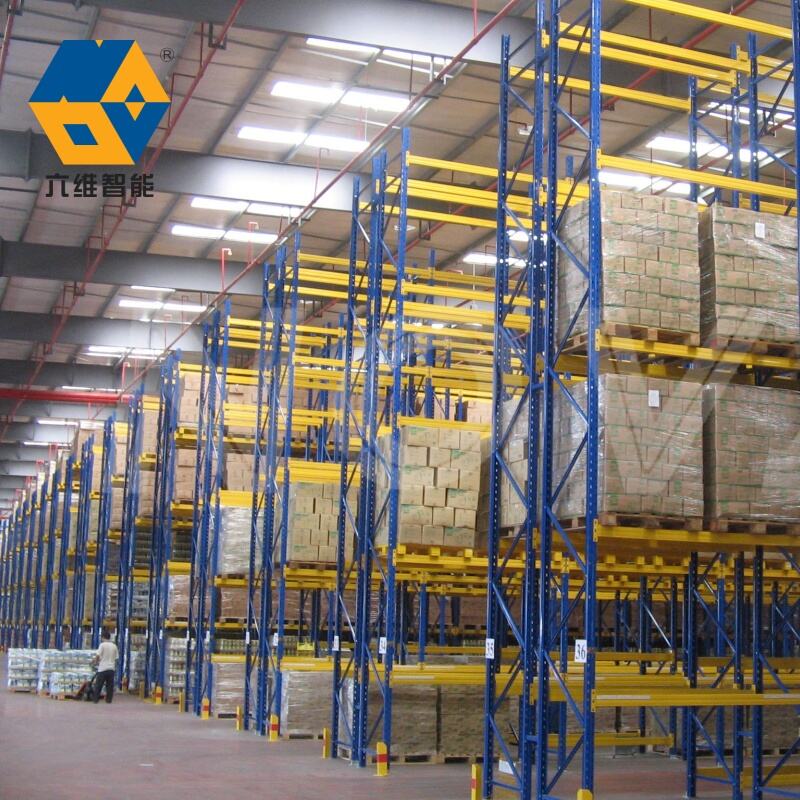Understanding the Power of High-Density Storage Solutions
Drive in pallet racking represents a revolutionary approach to warehouse storage, offering unprecedented storage density and efficiency for businesses handling large quantities of similar products. This storage system has transformed how warehouses maximize their available space while maintaining smooth operational flow. As companies face increasing pressure to optimize their storage capabilities, drive in pallet racking emerges as a compelling solution that deserves closer examination.
The fundamental principle behind drive in pallet racking is simple yet ingenious - it eliminates unnecessary aisles to maximize storage capacity. Instead of requiring access to every pallet position from a forklift aisle, this system allows forklifts to drive directly into the storage lanes, enabling deep storage of multiple pallets in a continuous line. This design dramatically increases storage density compared to traditional selective racking systems.
Core Components and Design Features
Structural Elements and Support Systems
The backbone of drive in pallet racking consists of several crucial components working in harmony. The system features vertical uprights connected by horizontal and diagonal bracing, creating a robust framework. Support rails run along the length of each storage lane, providing secure resting points for pallets. These rails are carefully designed with specific angles and dimensions to facilitate smooth pallet placement and retrieval.
Guide rails mounted at floor level help direct forklift movements, ensuring safe navigation within the storage lanes. The entire structure is engineered to withstand significant loads while maintaining stability, with reinforced base plates anchoring the system firmly to the warehouse floor.
Access and Operation Mechanics
Drive in pallet racking operates on a last-in-first-out (LIFO) basis when accessed from one side, or can function as a drive-through system when accessible from both ends. The forklift operator enters the storage lane, guided by rails, and places or retrieves pallets at various depths. This design eliminates the need for multiple aisles, though it requires skilled operators and appropriate equipment specifications.
The system's success relies heavily on precise dimensional planning, ensuring adequate clearance for forklift operation while maximizing storage density. Careful consideration must be given to pallet sizes, load weights, and forklift specifications during the design phase.
Implementation and Operational Advantages
Space Utilization and Storage Efficiency
One of the primary benefits of drive in pallet racking is its exceptional space utilization. By eliminating multiple access aisles, this system can increase storage capacity by up to 75% compared to traditional selective racking. This dramatic improvement makes it particularly valuable in cold storage facilities, where space comes at a premium, or in warehouses handling large quantities of homogeneous products.
The vertical storage capabilities further enhance space efficiency, allowing warehouses to take full advantage of their building height. This three-dimensional optimization of space translates directly into reduced facility costs per stored unit.
Cost-Effectiveness and ROI Considerations
While the initial investment in drive in pallet racking may be higher than simpler storage solutions, the long-term financial benefits often justify the cost. The increased storage density reduces the required facility footprint, leading to lower real estate and operational costs. Additionally, the system's durability and minimal maintenance requirements contribute to favorable total cost of ownership.
Energy savings can be substantial, particularly in temperature-controlled environments, as the compact storage configuration reduces the volume of space requiring heating or cooling. These operational efficiencies combine to deliver compelling return on investment for suitable applications.
Safety and Maintenance Protocols
Safety Considerations and Best Practices
Operating drive in pallet racking safely requires comprehensive training and strict adherence to safety protocols. Proper forklift operation is crucial, as drivers must navigate within confined spaces. Regular staff training should cover proper loading and unloading procedures, weight limitations, and damage inspection protocols.
Safety features such as guide rails, impact protection, and load notices play vital roles in preventing accidents and ensuring smooth operations. Clear operational procedures and regular safety audits help maintain a secure working environment.
Maintenance Requirements and System Longevity
Regular maintenance is essential for ensuring the long-term reliability and safety of drive in pallet racking. This includes routine inspections of structural components, particularly those subject to potential forklift impact. Any damage should be promptly repaired to prevent escalation of structural issues.
Preventive maintenance schedules should include checking rail alignments, inspecting welds and connections, and verifying the integrity of floor anchoring. Well-maintained systems can provide decades of reliable service, making them a durable investment for warehouse operations.

Frequently Asked Questions
What types of businesses benefit most from drive in pallet racking?
Drive in pallet racking is particularly beneficial for businesses handling large quantities of similar products with longer storage periods. This includes cold storage facilities, beverage distributors, food processors, and manufacturers dealing with batch production or seasonal inventory.
How does the system handle different pallet sizes?
While drive in pallet racking can be designed to accommodate various pallet sizes, it's most efficient when handling standardized pallet dimensions. The system should be specifically configured during installation to match the intended pallet sizes, ensuring optimal clearance and safety.
What are the key maintenance requirements?
Essential maintenance includes regular structural inspections, checking rail alignments, verifying floor anchor integrity, and promptly addressing any impact damage. A comprehensive maintenance program should include daily visual checks by operators and periodic detailed inspections by qualified personnel.

